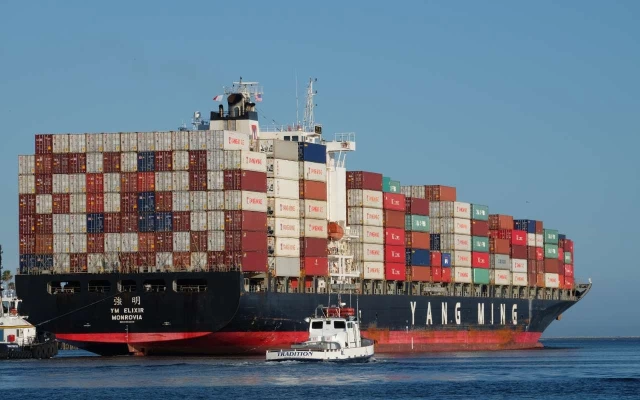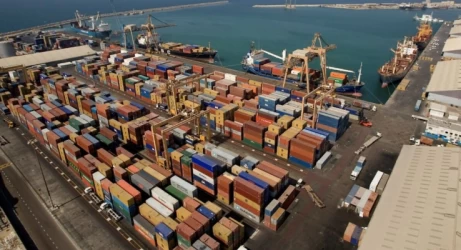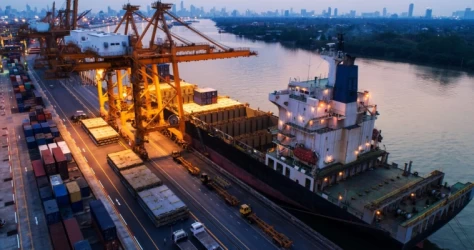Sea freight in the port of Toronto
Toronto Port, located on the northern shore of Lake Ontario, plays a crucial role in Canada’s maritime and logistics industry. Although not a major ocean port, its strategic location in the Great Lakes system allows it to serve as a vital hub for maritime trade, connecting central Canada to the Atlantic Ocean via the St. Lawrence Seaway. This port plays a significant role in facilitating both domestic and international trade. In this article, we explore the importance of maritime transport in Toronto Port, its infrastructure, the types of goods transported, environmental concerns, and its contribution to the local and national economy.
1. Importance of Toronto Port in Maritime Transport
Toronto Port is an essential link in Canada's trade network, handling various types of cargo that include raw materials, manufactured goods, and consumer products. While it may not be as large as some of the oceanic ports, its role in maritime transportation is significant for both the local and regional economy. Through its links to the St. Lawrence Seaway, the port provides access to the Atlantic Ocean, allowing for international shipping routes, and supporting trade with Europe, Asia, and beyond.
2. Infrastructure and Facilities
The Port of Toronto features state-of-the-art infrastructure that caters to a variety of shipping needs. It includes cargo terminals for bulk materials, container handling, and specialized cargo. The port is equipped with cranes, warehouses, and other logistical support to facilitate efficient movement of goods. There is also a close connection with rail and road networks, ensuring seamless integration with other transport modes for inland distribution. Additionally, the port’s proximity to Toronto’s financial and industrial sectors amplifies its logistical value.
3. Types of Goods Transported
Toronto Port handles a wide array of goods, both imports and exports. Major cargo categories include:
- Bulk Cargo: Includes aggregates like limestone, cement, and sugar.
- Containers: Toronto Port is also involved in handling containerized goods, albeit on a smaller scale than major container ports.
- Raw Materials: Key products such as iron, steel, and other industrial inputs.
- Consumer Goods: Various finished products and consumer goods are also shipped through Toronto.
The variety of cargo handled is indicative of Toronto Port’s flexibility and importance as a logistics center for the central Canadian market.
4. Economic Impact
Toronto Port plays a key role in boosting both the local and national economy. As a facilitator of trade, it generates employment opportunities directly at the port and in related industries like logistics, transportation, warehousing, and manufacturing. The port supports thousands of jobs and is a critical element in ensuring the smooth flow of goods that feed into Canada's economic growth. It is a gateway for both imports and exports, serving regional industries and consumers by providing access to international markets.
5. Environmental and Sustainability Concerns
Like many major ports worldwide, Toronto Port has to balance economic activity with environmental stewardship. The port is located near residential and recreational areas, so managing environmental impacts is critical. Toronto Port Authority has implemented various initiatives to reduce emissions from ships, improve water quality, and manage noise pollution. Investments in sustainable practices, such as the use of cleaner fuels for ships and energy-efficient technologies for port operations, are ongoing to minimize the environmental footprint.
6. Challenges and Future Development
While Toronto Port plays a significant role in maritime transport, it faces several challenges. Congestion on surrounding road networks, capacity limitations for larger vessels, and competition from larger ports all pose hurdles for growth. However, there are plans for future expansion and modernization that aim to increase cargo handling capacity, improve technology, and strengthen infrastructure. Additionally, as global trade patterns evolve, Toronto Port may continue to adapt and enhance its role within the broader Canadian and North American maritime landscape.
Conclusion
Toronto Port may not be the largest maritime hub in Canada, but its role in supporting regional and international trade cannot be underestimated. Its strategic location within the Great Lakes system allows it to serve as an important logistics center, connecting central Canada to international markets. By continuing to invest in infrastructure and sustainability initiatives, Toronto Port will remain a key player in Canada's maritime transport industry, driving economic growth while managing environmental impacts responsibly.
If you have any specific questions or need further assistance, feel free to ask!










